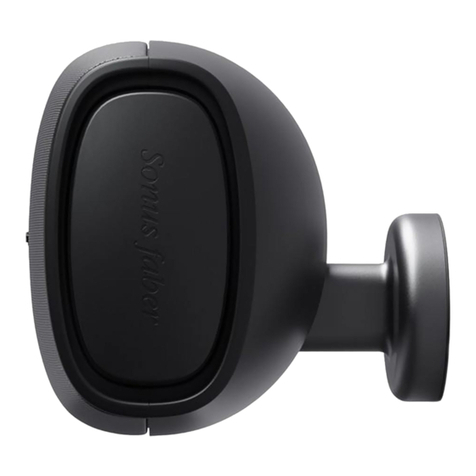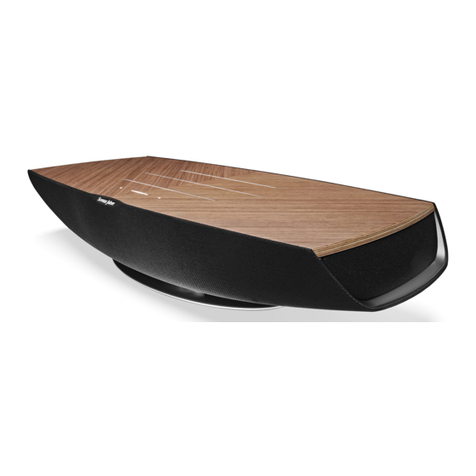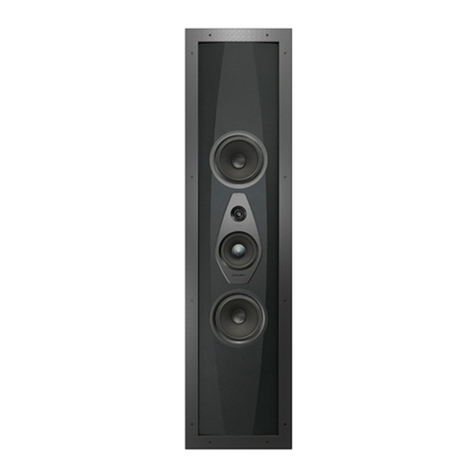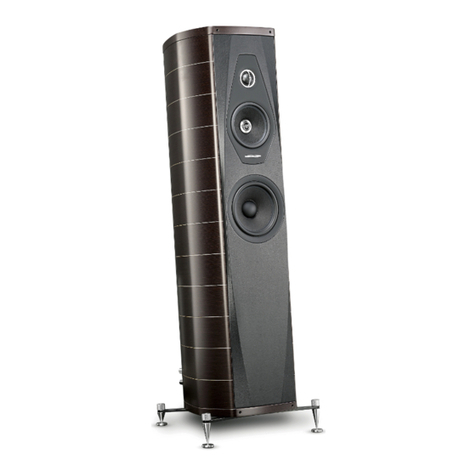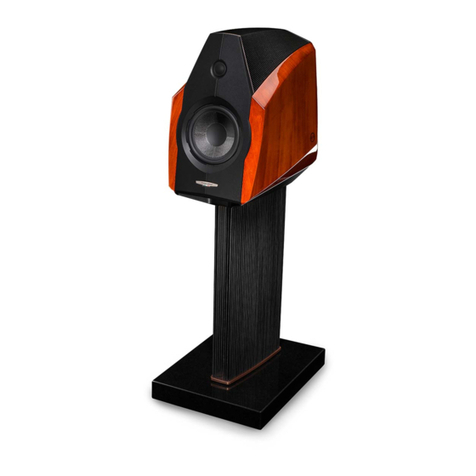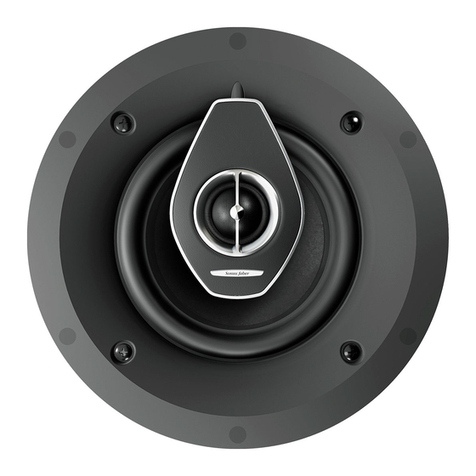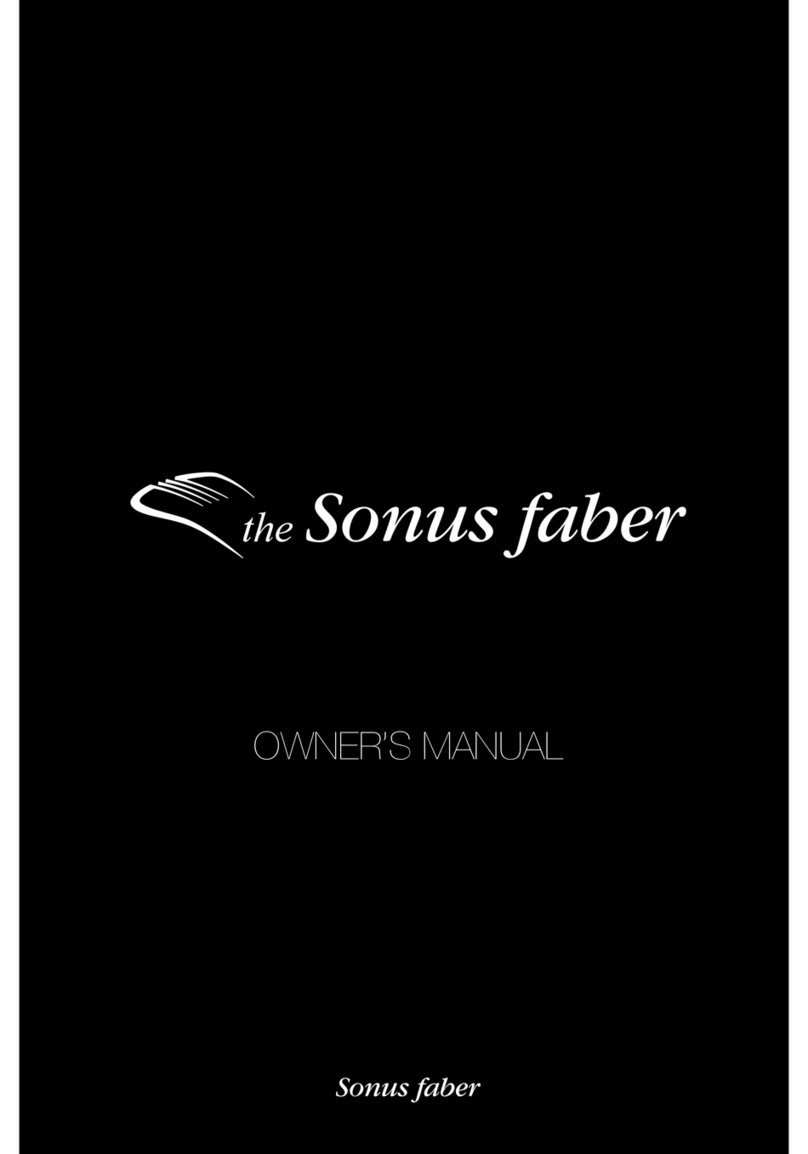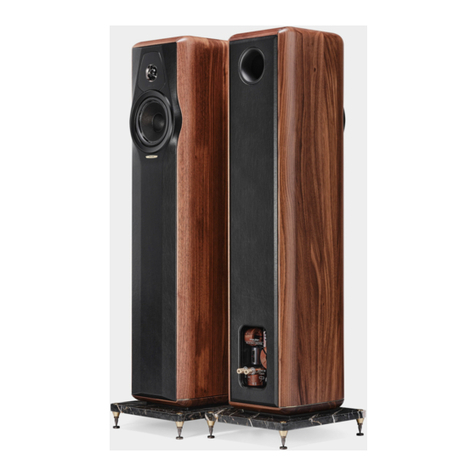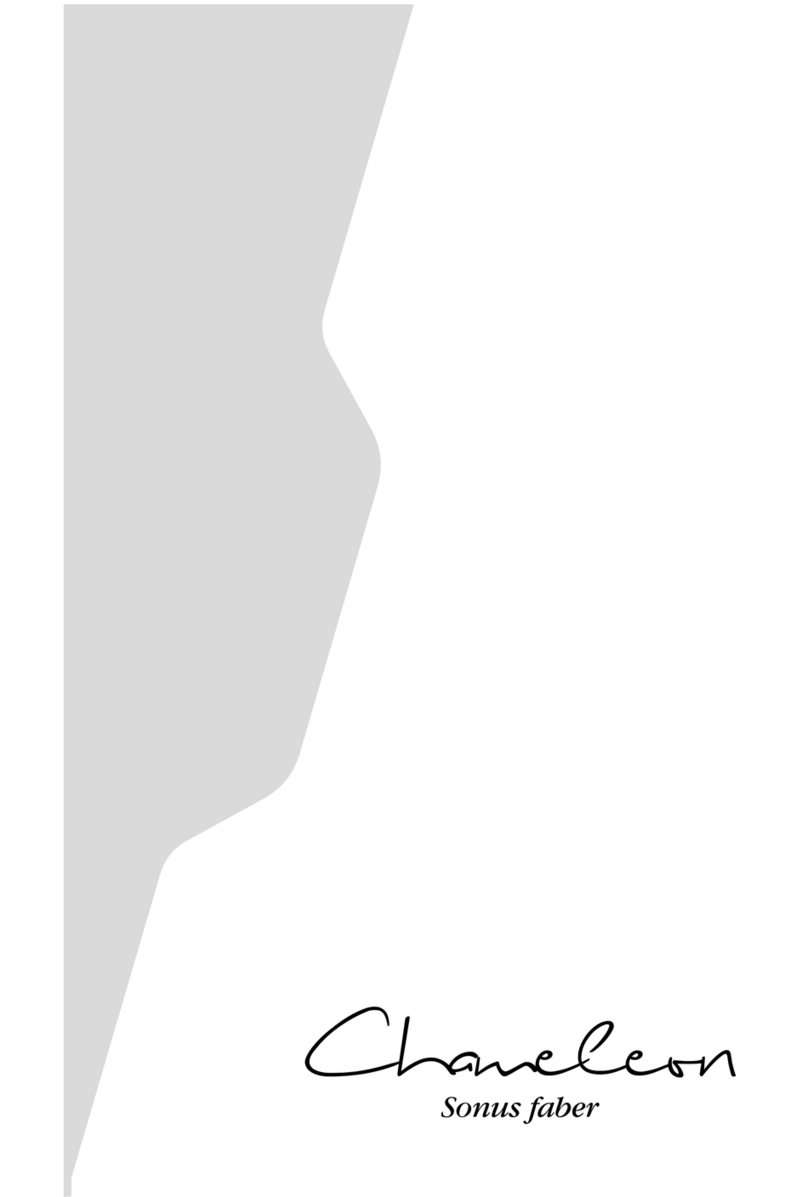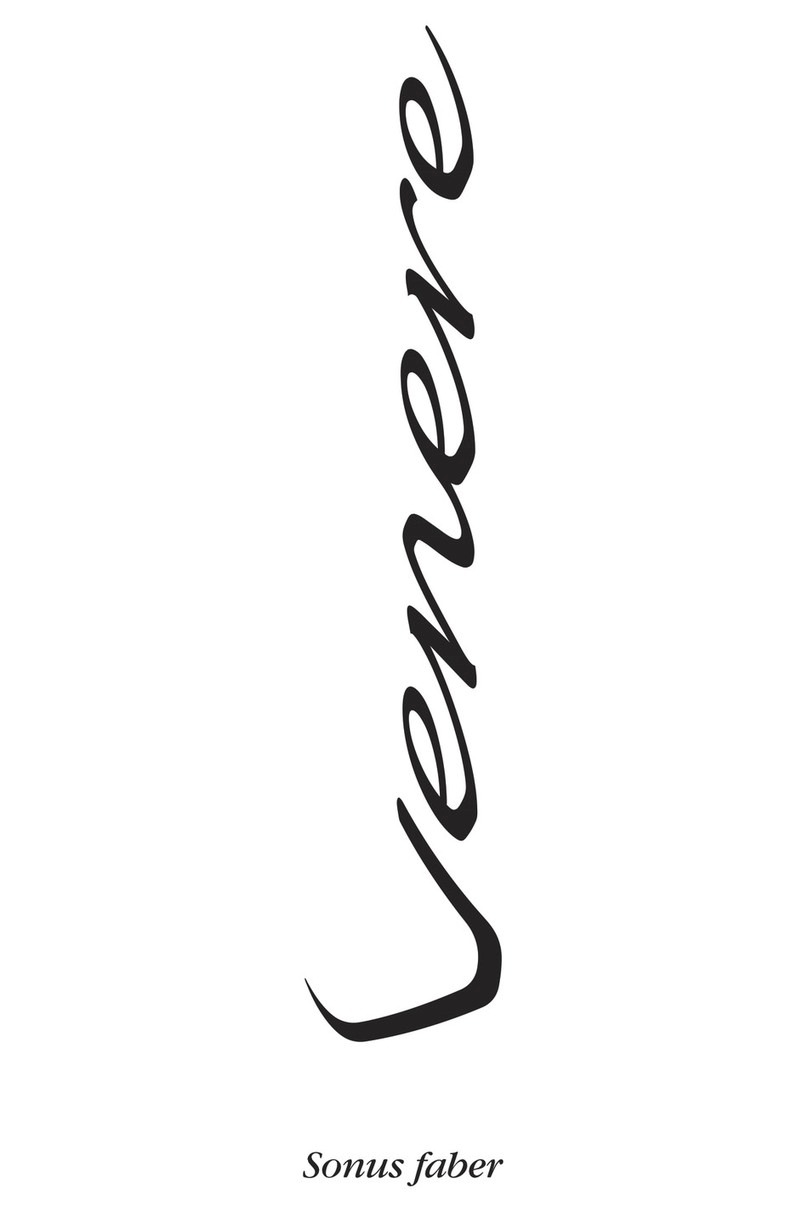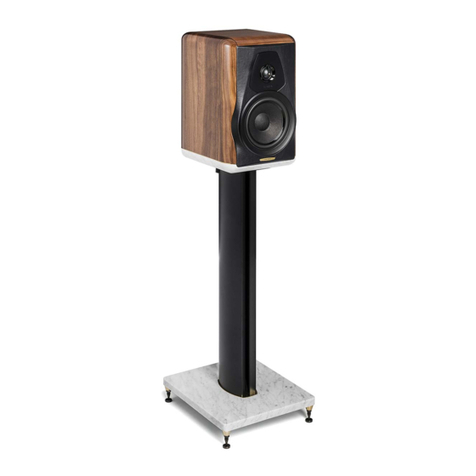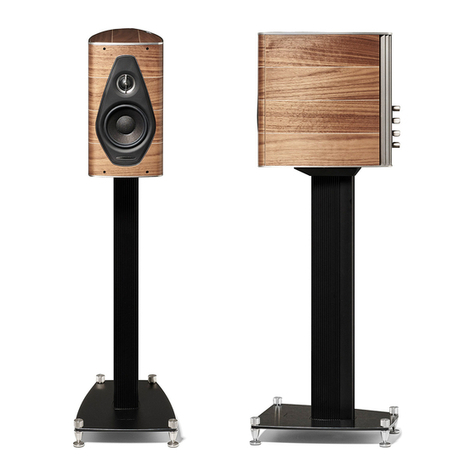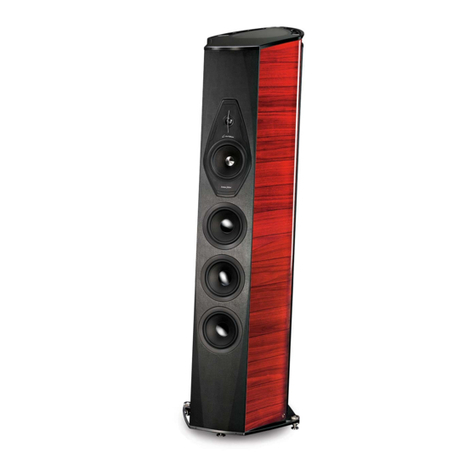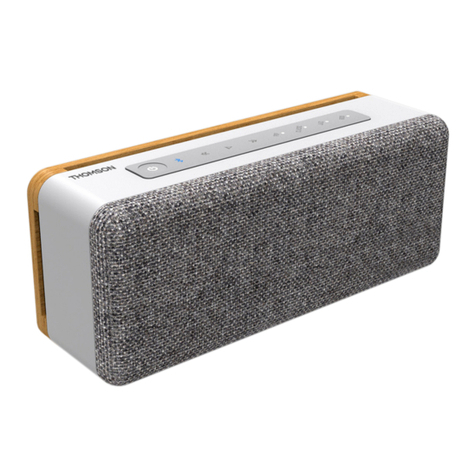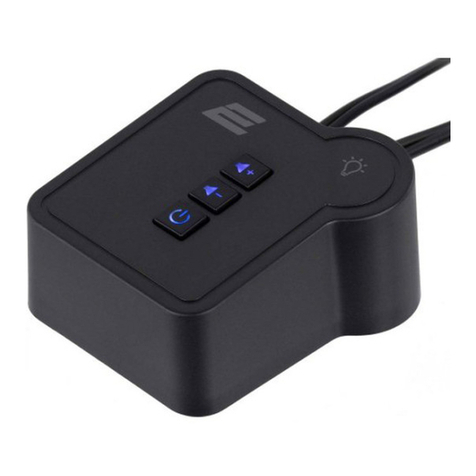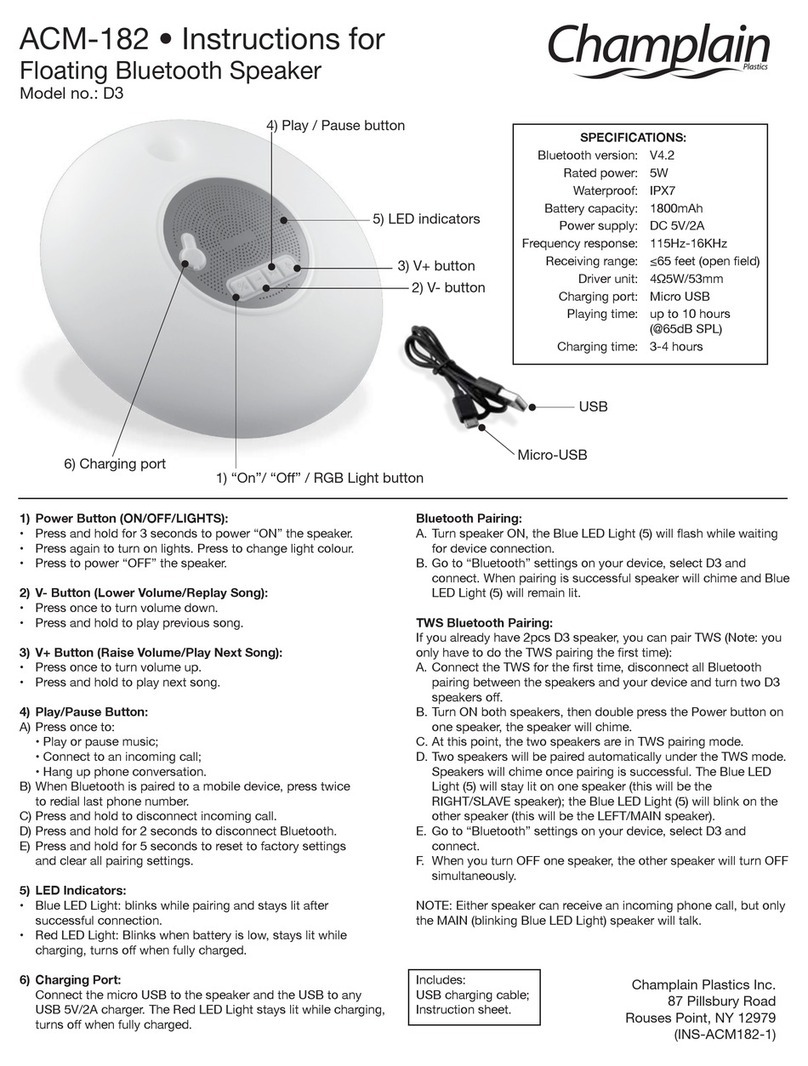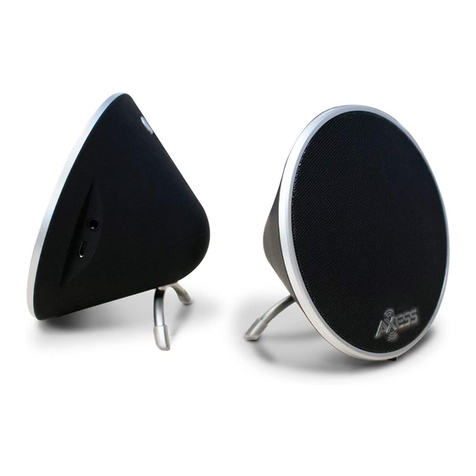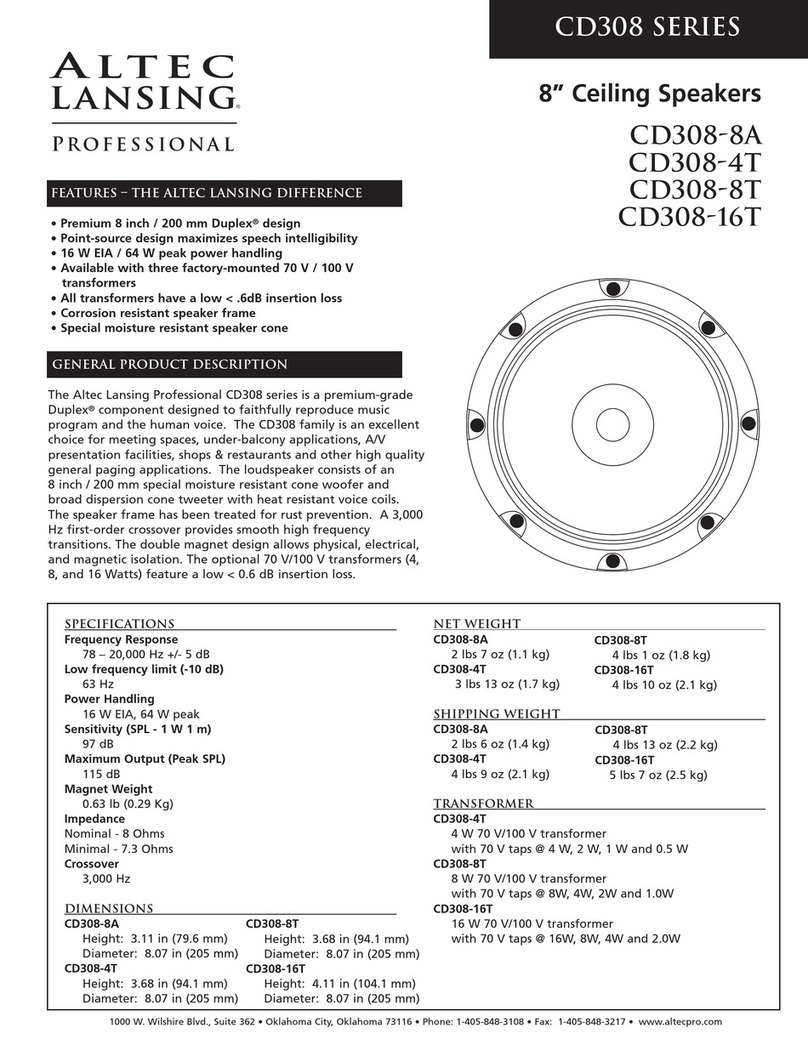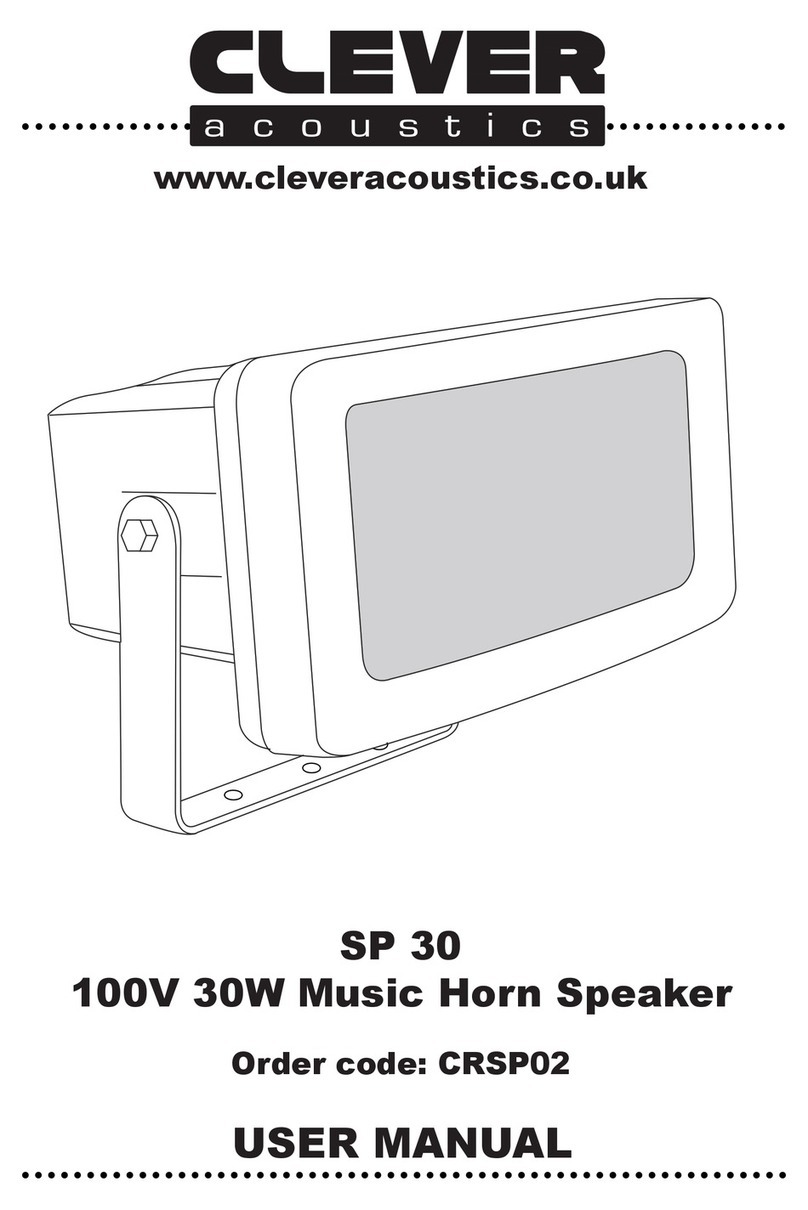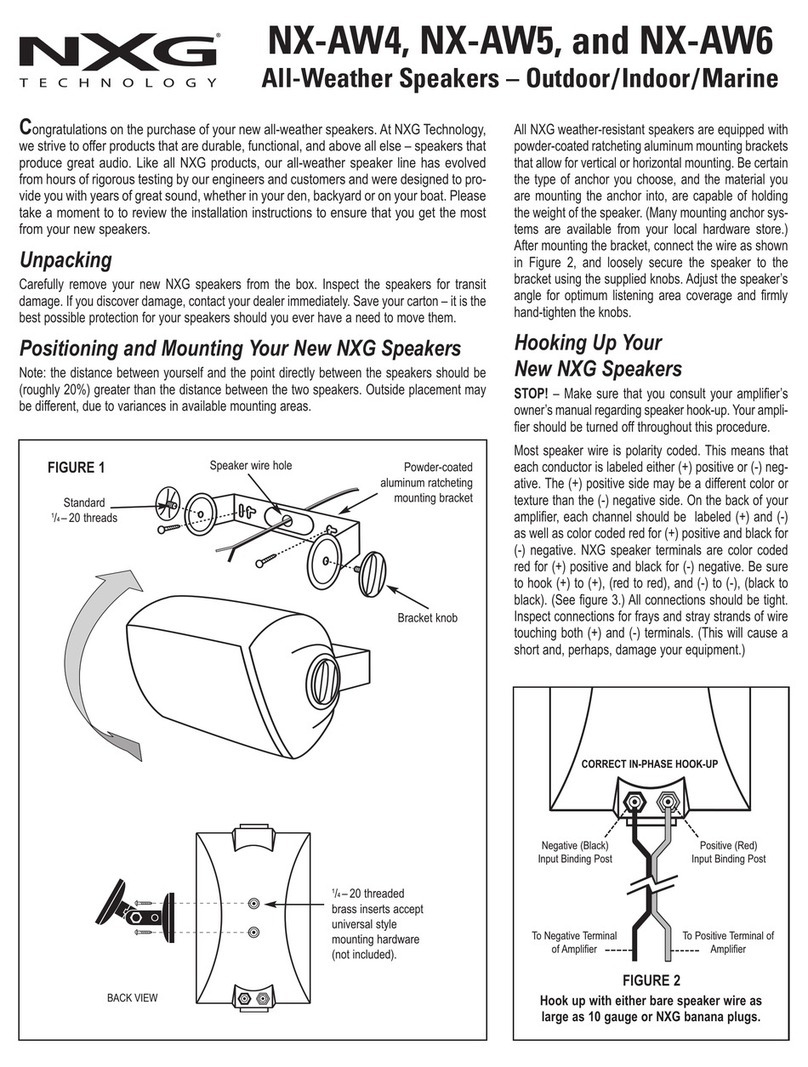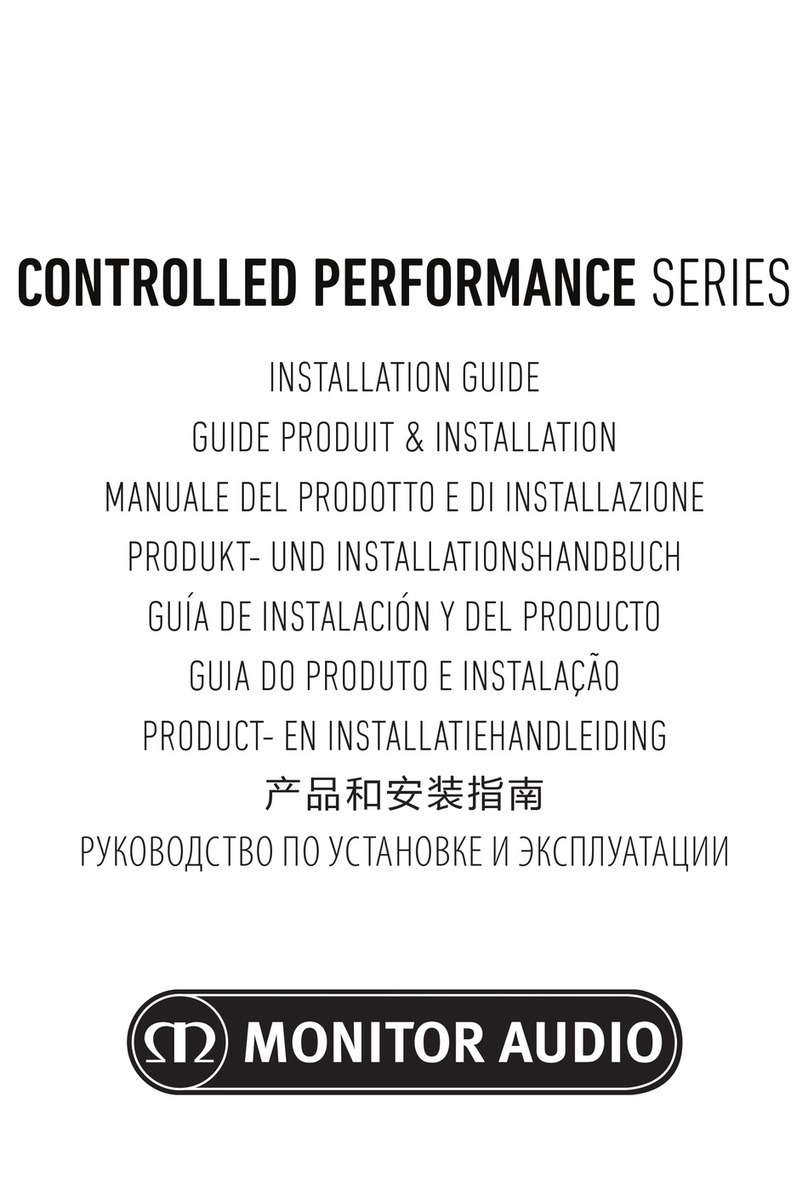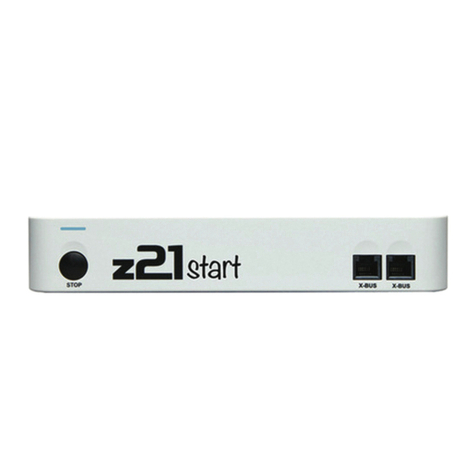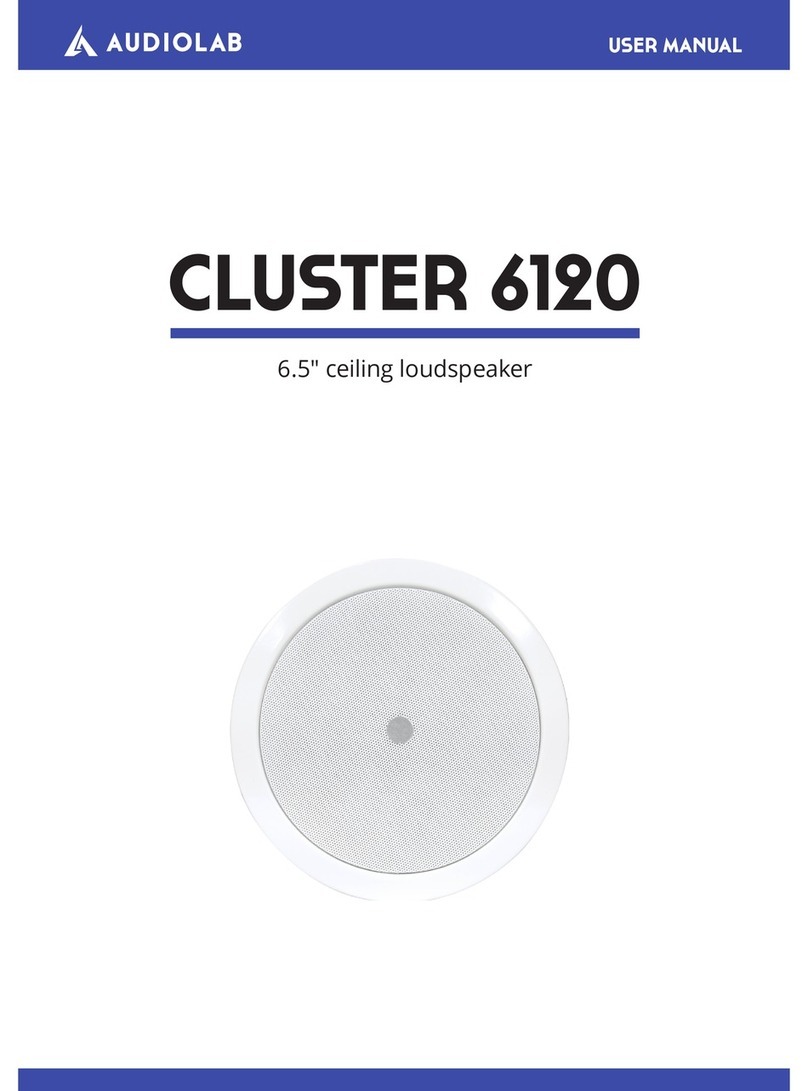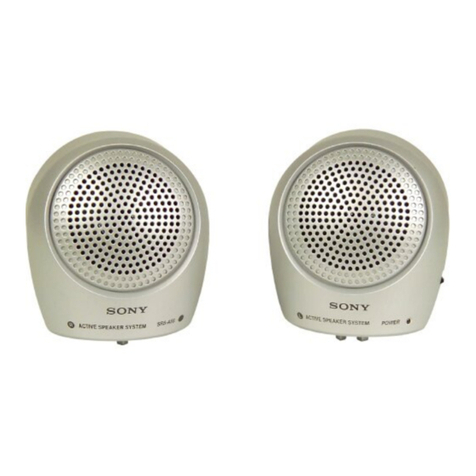
19
ENGLISH
The conformation of the listening environment and the loudspeakers’ positioning can affect the entire
audio system’s performance.
For example, a room with irregular shape can improve the response within the listening environment,
since they limit the formation of standing waves, while a room with a parallelepiped shape is potentially
more suitable to generate balanced sound images.
The presence of carpets and curtains positively affect the acoustics of the environment, contributing to
the absorption of the rst reections and the lowering of reverberation.
There are no hard and fast rules on speaker set-up which are valid for every environment. Nevertheless,
a good approach is to start by dividing the listening environment’s oor plan, assuming a rectangular
shape, into three areas with equal surface, as indicated by the continuous lines in Figure 8.1.
The loudspeakers must be positioned on the rst of the lines identied (A), at a distance from each
other of no less than 1.8 metres. They must be suitably distanced from the side walls, while the
listening point will be at the centre of the second line (B). This will all form an equilateral triangle
listening conguration.
In this way, undesired acoustic effects, deriving from intense rst reections and environmental
resonance, which would be generated with loudspeakers positioned in proximity of the walls and
corners of the room, are minimised.
Figure 8.1 also shows the angling of the speakers must be such to make the emissions converge
towards the head of the person listening. This measure allows the best focusing of the reconstructed
sound image to be obtained. The depth of the same depends on the distance between the loudspeakers
and the rear wall.
The best listening point is envisioned at a height of approximately 1.1 metres off the ground.
At this point, it will the pleasure of listening that will help to nd the best balance between accuracy
of the focus and soundness of the backstage, varying the listening distance (always remembering to
maintain an equal distance between the loudspeakers) and/or identically consistently modifying the
angling of the loudspeakers.
Given that the illustrated procedure, which is aimed at creating almost perfect listening conditions,
cannot be applied by all of our customers due to objective problems linked to the organisation of the
living environment, it is recommended to position the two loudspeakers away from the corners of the
room, and at a distance of at least 1 m from the back walls.
If the loudspeakers are to be positioned on a shelf, distancing is at least one and a half metres and
surfaces at equal height is recommended.
3.3.1 AUDIO STEREO SYSTEMS
In addition to conventional audio stereo systems, the Olympica Nova loudspeakers can also be used in
multichannel audio and audio-video systems (Home Theater). In both cases, the rules for positioning
are those indicated in Fig. 8.2, also including those for use of one or more subwoofer.
Lateral channels (LSi, RSi) and rear channels (LS and RS) can be replaced by in-wall or in-ceiling
loudspeakers, if desired.
The diagram indicates the positions recommended for 2 subwoofers (unit B = additional).
1. Recommended for clear reproduction of the bass sounds
2. Extreme conguration for maximum acoustic output
3. Recommended for clear reproduction of the bass sounds (additional subwoofer)
4. Extreme conguration for maximum acoustic output (additional subwoofer)
NOTE If two subwoofer units are used, it is greatly recommended to install one on the left and one on
the right of the listening area. Do not position the subwoofers symmetrically to each other with respect
to the main listening point.
3.3.2 AUDIO AND AUDIO-VIDEO MULTICHANNEL SYSTEMS (HOME THEATER)










